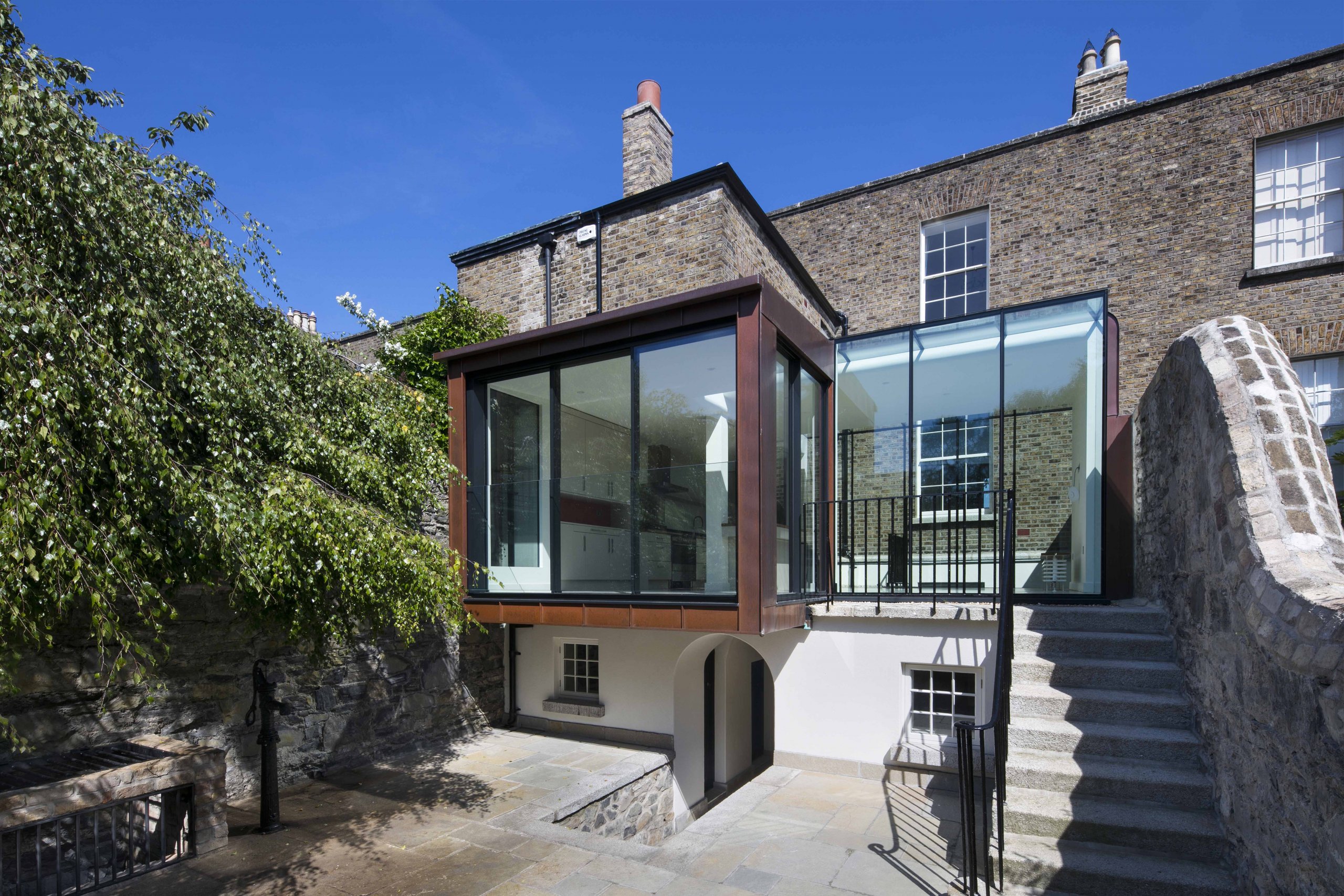Following a complex design, planning and construction process, the listed property now boasts a contemporary copper and glass kitchen and living space, which replaces a twentieth century glass conservatory.
Digital technologies were key to modelling and communicating the design. They also played a major role in overturning planning objections and ensuring the extension was built to pinpoint accuracy.
A striking
contemporary design
The new structure is formed of two intersecting cubes. One replaces the previous kitchen to make use of the existing services and the other accommodates a new dining and living area. The existing stone steps have been retained with a landing area at the top, providing access to and from the garden.
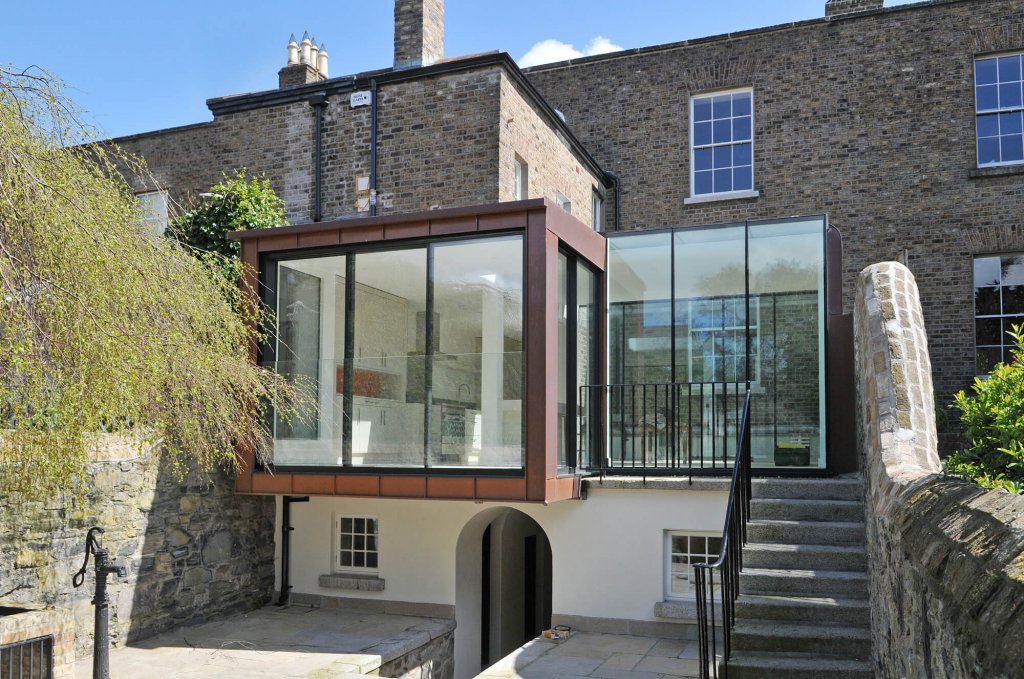
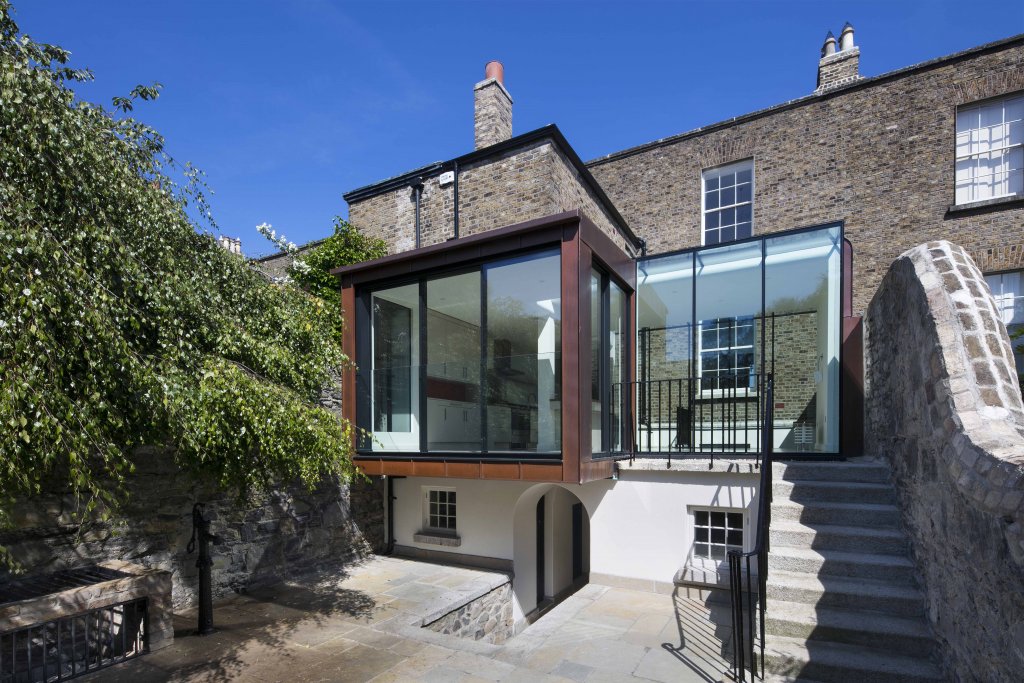
The extension is a striking addition to the historic building. However, its sensitively designed, transparent form – created using modern materials and construction techniques – allows it to sit lightly next to the original brick structure.
Meeting the challenges
of the planning department
The original design was completed by architect Caitriona Noonan, who modelled the proposed extension in Archicad following a number of workshops with the client. But the unconventional design meant gaining planning permission proved a challenge.
Concerned that the extension would obstruct the view to the garden from the reception room, the planners eventually granted permission, but on the condition that the extension be halved in size so it did not span the full width of the house.
Undeterred and convinced that the project should continue as designed, the client asked Cummins + Voortman to assist with the appeal. Cummins + Voortman carried out a visual impact analysis, requiring more detailed texture mapping and comprehensive modelling in Archicad, in conjunction to the written report compiled by Catriona Noonan.
Point cloud survey
to model historic building
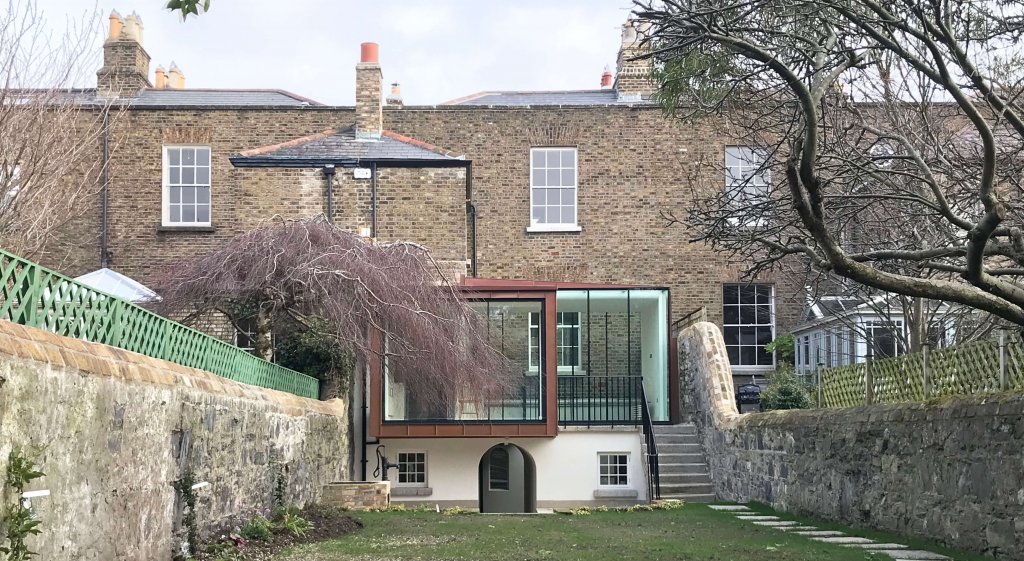
Cummins + Voortman began with an analysis of the existing Archicad model. The historic house is a listed property with uneven original walls. The existing survey information didn’t provide enough detail, so Cummins + Voortman commissioned a detailed point cloud survey.
With the survey complete, the architects could model the existing property and the extension with total accuracy. The survey data was so large (13GB), it had to be divided into 10 parts to be imported into the Archicad model at full quality scan resolution. Cummins + Voortman then completely remodelled the design in Archicad with the point cloud data included.
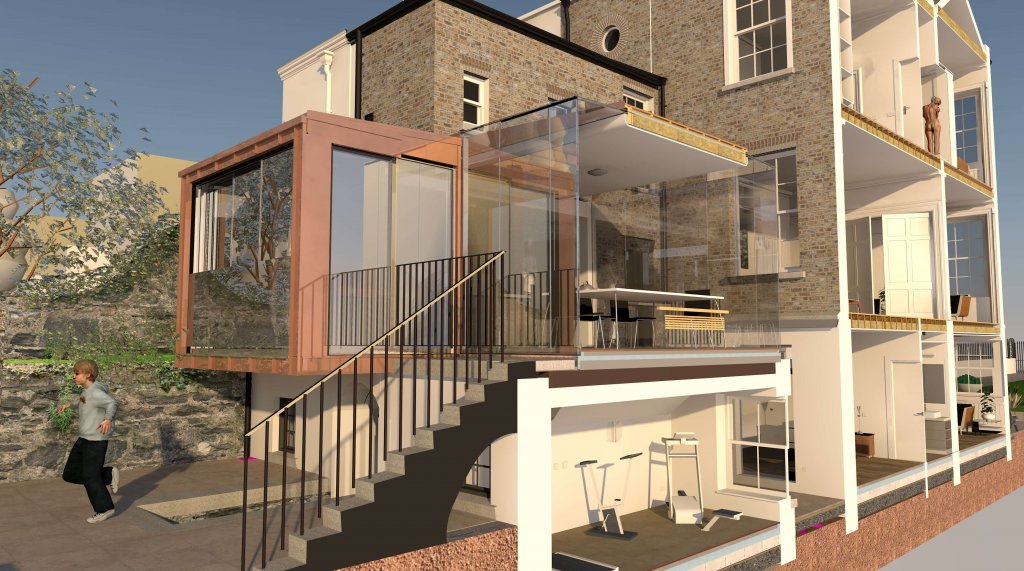
Once the point cloud survey was complete we were confident we had all the information we needed. It was so useful to be able to accurately model the position of walls, architraves, skirtings and ceilings for example – to assist with the decision making for a complex listed building.
Bernard Voortman, director of Cummins + Voortman
“It was also very helpful in getting the levels right, to make sure the new extension was properly aligned with the old building. In this instance, using the point cloud was the only realistic way to model the old non-linear walls; if we’d used a conventional point laser handheld distance meter it would have taken far too long.”
The point cloud survey approach also helped minimise the disruption to the client.
“There is less measuring and double-checking on-site,” said Bernard. “There’s no need to go back to the property multiple times to take photographs. Once you have a point cloud survey with adequate colour values you can work from the model with 100% confidence that it’s right.”
Digital visualisations
help to win planning appeal
With the new Archicad model complete, Cummins + Voortman produced a walk-through video, a sun study and a full suite of photographs and images showing the existing property with the conservatory and the proposed extension.
As a result, at the appeal, the condition for the half-size extension was overturned and the client was able to continue with the original designs.
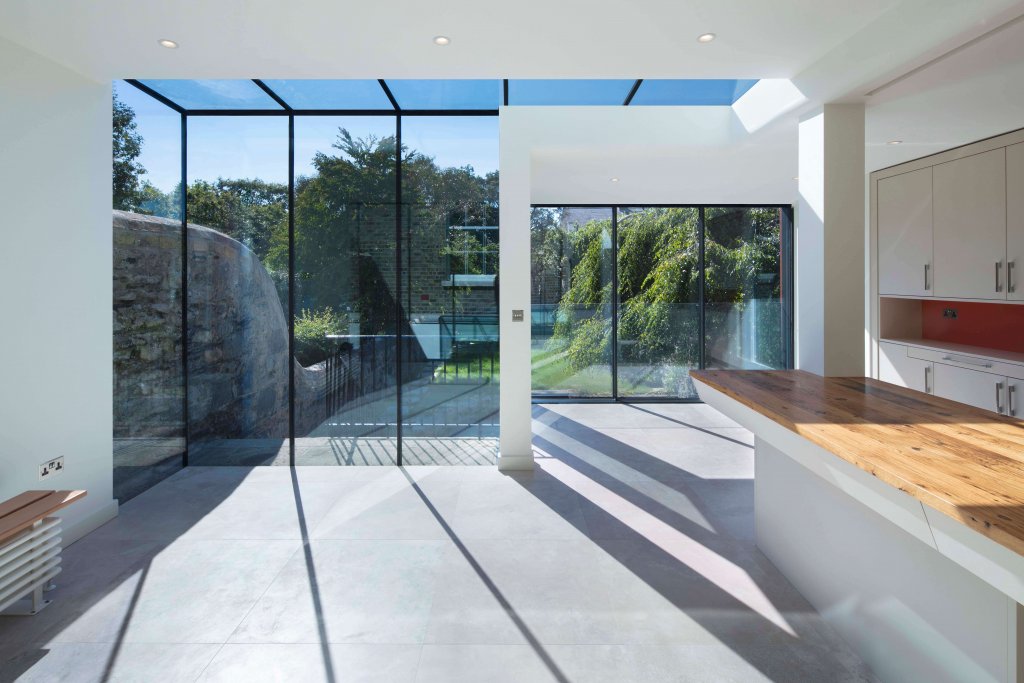
With the help of Archicad’s realistic rendering the planners were able to visualise the design, which was incredibly useful in the planning process. It’s all about achieving optimal communication of the design.
Bernard Voortman
Offsite prefabrication
for a precision build
The contemporary extension required a high level of precision during the construction phase. The extension needed to sit tightly between the existing building and the original deformed stone boundary wall and under a stone window sill at roof level. It was therefore essential that the design was fully detailed beforehand, with all critical junctions solved in terms of water proofing, airtightness and thermal performance.
Bernard said: “We appointed a master builder as the main contractor for this project. We needed someone who was highly competent to manage the project and who was also used to working with digital technologies.”
The extension was constructed using a steel and timber frame with large areas of structural glazing. The steel and glass were pre-fabricated offsite and then assembled onsite. This required verified model consistency to ensure all elements fitted together. There was no room for error.

Careful collaboration
and exchange of information using IFC
Throughout the build process the architect, main contractor, structural engineer, steel subcontractor and glazing manufacturer worked closely together.
By using the point cloud survey, we were able to manufacture the steels directly from the data taken from the Archicad model. Although the structural engineer was also using Archicad, they preferred to exchange information using IFC. Information was then sent to the steel subcontractor via IFC and conventional drawings.
Bernard Voortman
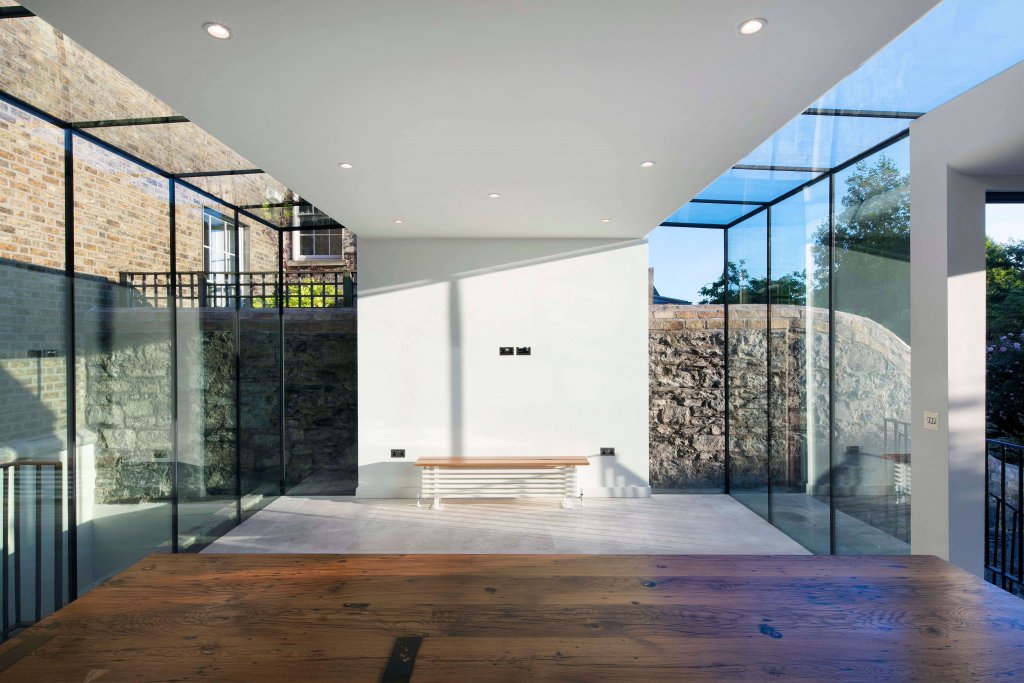
The specialist glazier required minimum tolerances which demanded a high level of certainty at steel installation, glazing design and assembly. Once the steel was in place, the glazier carried out its own point cloud survey and found there was only five millimetres difference between the installed steel and the model. The overall construction process was flawless and all elements fitted perfectly once they arrived onsite.
Using BIMx
for collaboration
Throughout the project, Cummins + Voortman used the virtual reality presentation app BIMx extensively with the client, contractor and subcontractors. The contractor also used BIMx to improve collaboration and to share information with the whole team.
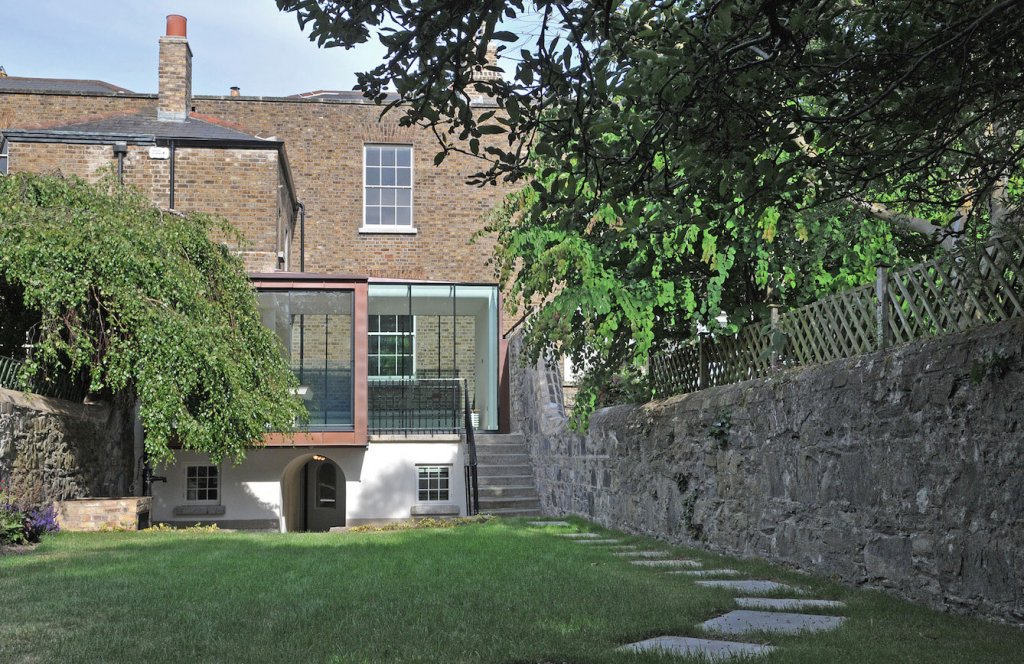
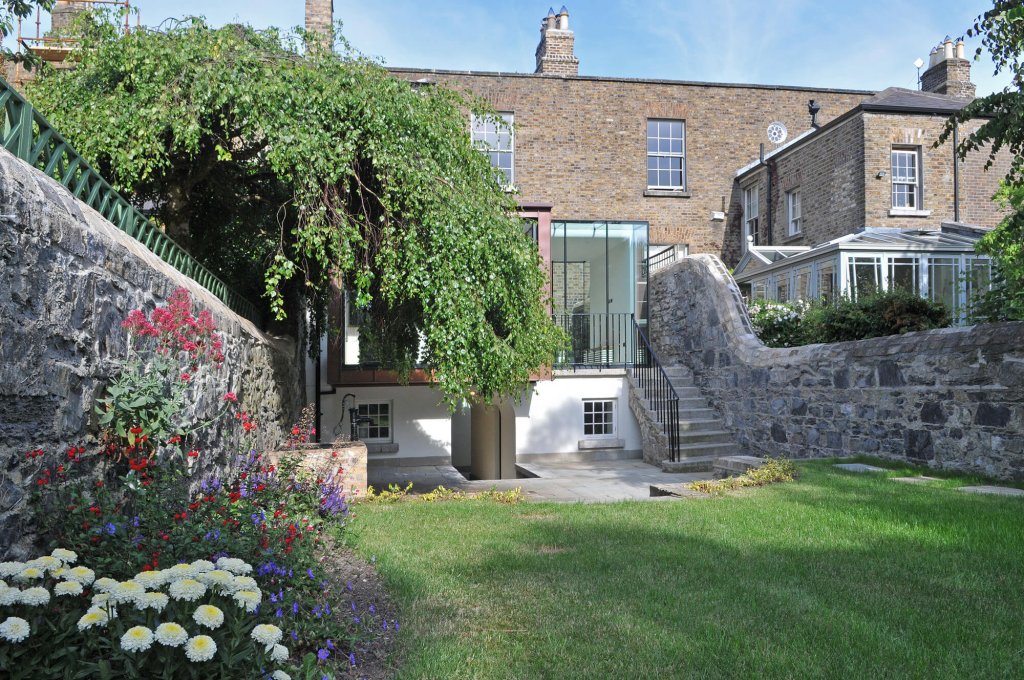
BIMx gives us a tremendous amount of confidence in our design and it really helps to coordinate and communicate with clients.
During the construction phase, we used BIMx and the Google cardboard viewer with our client onsite, which allowed him to stand in the building and see exactly what the extension would look like when it was completed. He absolutely loved that.
Cummins + Voortman also used the completed Archicad model to help the client assess kitchen designs and choose materials.
The high-quality renders and the BIMx hypermodel helped with the decision-making process and gave our client full confidence in the proposed design.
BIM is better experienced than explained. Its true value becomes clear when you deliver a project. For this project, the overall satisfaction from the client was 100% and we are confident in the knowledge that we have delivered a beautiful, high quality extension.
Bernard Voortman
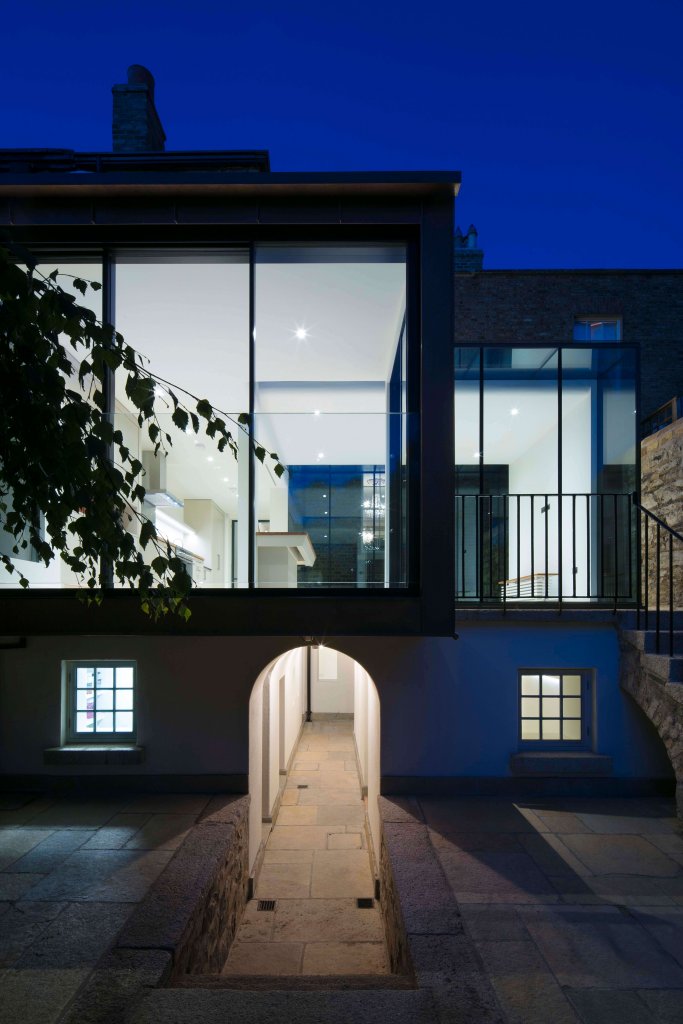
About Cummins + Voortman
Cummins + Voortman, is an acclaimed RIAI & RIBA Sustainable Ecological Architecture, Urban Design & Advanced BIM (Building Information Modelling) Practice based in Ireland, but with projects of all types throughout Ireland, the UK & Internationally. It is a leading Irish Practice that was founded in 2005 to meet the changing needs of the market and to set a new standard in design and client service for projects of all scales including both domestic and commercial clients.
About Graphisoft
Graphisoft® ignited the BIM revolution in 1984 with Archicad®, the industry first BIM software for architects. Graphisoft continues to lead the industry with innovative solutions such as its revolutionary BIMcloud®, the world’s first real-time BIM collaboration environment; and BIMx®, the world’s leading mobile app for lightweight access to BIM for non-professionals. Graphisoft is part of the Nemetschek Group.
